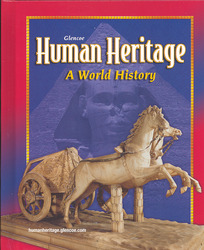Human Heritage: A World HistoryChapter 23:
The Eastern SlavsWeb Activity Lesson Plans“The Kremlin Museum: Pages of History”Introduction
Students have read about how Moscow grew in size and power during the Mongol conquest and later under czar rule. In this activity, students will explore the historic buildings of Moscow. Lesson Description
Students will use information from the Kremlin Museum Web site to learn about the historic buildings of the Kremlin. Students will read about the city's architecture and the purpose of some of the buildings. Students will then answer four questions and apply this information by writing a letter to a friend about the Kremlin. Instruction Objectives
- Students will relate the architecture and historical buildings of Moscow to important events, periods, or eras of Moscow's past.
- Students will be able to apply this knowledge to write a letter to a friend describing what they learned about the Kremlin.
Student Web Activity Answers
- Yuri Dolgoruky
- Between 1485 and 1495, Italian masters built new walls in the Kremlin. Since that time, foreigners started calling the Kremlin a castle.
- It has a cache-well [secret well] and a secret underground passage to the Moskva River.
- At the Assumption Cathedral great princes were crowned and local princes swore fealty. Here inaugurations of Tsars and coronations of Emperors were held. The Assumption Cathedral was the place to inaugurate Bishops, Metropolitans and Patriarchs, to read off statements, to hold church services before military campaigns and in case of victory. Also, heads of the Russian Orthodox Church were buried in the Assumption Cathedral.
- Students' letters will vary.
 | 




